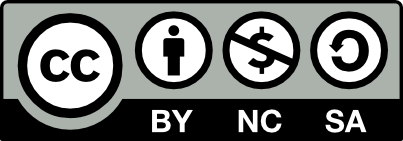Written by Kashish Khan
3rd year Student
Rajshree law College, Bareilly
December 2024
INTRODUCTION
Life may be perceived as an amazing gift by many people, and it is understandable why compassionately ending someone’s life means so much to them. Nevertheless, there are circumstances in which life becomes unbearable, for instance, there are some individuals who have terminal illnesses or are severely disabled, in such cases even seeking physician-assisted suicide is understandable. This ending of life can take the form of two different acts – suicide or euthanasia. Euthanasia also termed as “mercy killing”, is derived from the Greek terms EU (good) and Thanatos (death) and therefore can be interpreted as a ‘good death’.
The word euthanasia is described in the Merriam-Webster dictionary [i] as the intentional killing of s severely disabled or terminally ill person so as to end their suffering. The Euthanasia debate comes with interesting ethical, legal and moral connotations. There are two extremes involved: the hesitance to kill a person because of the respect for life, and the constant excruciating pain faced along with further wish to relieve that pain, and then comes the fear of euthanasia abuse if it is made legal, and the vague fears accompanying that. This article deals with the understanding of euthanasia, the legal situations in which euthanasia is reported in India, and the issues of wider respect including the right to die.
TYPES OF EUTHANASIA
Euthanasia is generally classified into two types:
- Active Euthanasia
Active euthanasia requires taking explicit steps to terminate someone’s life. For example, an injectable drug that causes death might be given sharply. As they refer to aggressive euthanasia, this approach seeks to put an end to the suffering and pain of a terminally ill patient.[ii] It is worth noting, however, that active euthanasia has remained a subject of countless debates due to its ethical as well as legal consequences.
- Passive Euthanasia:
Passive euthanasia refers to refraining or taking back medical treatment that is considered necessary for the maintenance of life of a patient.[iii] Hence, passive euthanasia can be practiced where a decision is made not to brain stem reflexes of a terminally ill patient. Its intention is not to forcibly intervene and end a life but rather let life come to its end on its own.
CONSTITUTIONAL AND LEGAL FRAMEWORK IN INDIA
The Euthanasia issue has grown in the Indian legal context largely due to significant judgments of the Supreme Court of India. The three cases that shaped the evolution of laws on euthanasia in India are Gian Kaur v. State of Punjab (1996), Aruna Shanbaug v. Union of India (2011), and Common Cause v. Union of India (2018)
- Gian Kaur v. State of Punjab (1996),
In this case, the Supreme Court endorsed the constitutional validity of section 309 of the Indian Penal Code with which, attempting to commit suicide is made an offense.[iv] The Court maintained that ‘right to shrivel’ is not inherent in the ‘right to life’ guaranteed by Article 21 of the Constitution.
- Aruna Shanbaug V. union of India (2011)
The prominent case of Aruna Shanbaug, a nurse who spent several decades in a state of unconsciousness, awakened the issue of passive euthanasia. The Supreme Court banned the practice on the condition that a medical board and the High Court endorsed it. [v]This ruling established the beginning of a more advanced legal comprehension about euthanasia as practiced in India – which comprehends both active and passive euthanasia.
- Common Cause v. Union of India (2018)
The Common Cause case was a turning point in the legal framework concerning euthanasia in India. The Supreme Court, in this judgment, recognized the importance of autonomy and of ‘dignity of a person’, which means that the right to life includes the right not to receive medical assistance.[vi] The Court also sanctioned voluntary passive euthanasia and recognized the ‘living will’, which would allow people to state their wishes in whatever specific detail pertaining to medical intervention not to be carried out.
The judgment stated that no one should be obliged to take any treatment that he or she does not want to take which upholds self-determination and human dignity even in the context of death (Common Cause v. Union of India, 2018).
ETHICAL AND MORAL CONSIDERATIONS
Legalizing euthanasia has intertwined complexities and moral issues. One of the arguments is that an individual has the right to die with dignity when he or she is in a situation of extreme distress. In their argument, proponents of euthanasia bring the principle of self-rule as well as the issue of pain relief.
On the other hand, opponents of euthanasia point out the potential risk of social abuse of euthanasia in the context of developing countries as well as the presence of social disparities.[vii] They suggest that legalizing euthanasia would result in some individuals being coerced into dying in a manner they did not desire or place less value upon life. Also, life is seen in many religions and cultures as a value and there is a prohibitive attitude to anything that is aimed at deliberately bringing it to an end.
INTERNATIONAL PERSPECTIVE
Euthanasia has been legal in various forms around the world, in places such as the Netherlands, Belgium and Canada under stringent regulations whereas active euthanasia is permitted.[viii] Passive euthanasia on the other hand is especially in use in America and United Kingdom more widely.
Therefore, Indian view of euthanasia can be understood in light of Indian society’s pluralistic culture and pluralistic religious and social practices One such decision the Supreme Court made which strikes a balance between individual liberty and degree of harm to society is to let people passively die through a common cause cause of action. This is an important step in living an ethical life.
SIGNIFICANCE OF THE LIVING WILL AND ADVANCE DIRECTIVE
The idea of a living will or an advance directive was made accessible to every Indian citizen through the common cause judgement which enables people to take advanced decisions for current anxieties about future and end of life care. When a living will have been enacted, a person is allowed to declare which medical treatments, if any, he/she wills to accept or wish to be turned down if the possibility of his/her decision-making ability is not therein the future.
CONCLUSION
The journey of legal recognition of euthanasia in India has had various phases, starting from Gian Kaur to the recent case of Common Cause. Passive euthanasia and the institution of living wills are a stride forward in terms of self-rule and endorsement of dignity.
No law authorizes active euthanasia but the law’s position on passive euthanasia can be regarded as compassionate while at the same time protecting against abuse. The Indian society and its legal and regulatory frameworks will be under constantly changing landscape due to evolving perceptions and development in medical technology. The right to die in the end implies the existence of love, respect and freedom of choice in dying processes.
REFERENCES:
[i] Merriam-Webster Dictionary, “Euthanasia,” Merriam-Webster.com Dictionary, available at https://www.merriam-webster.com (last visited Dec. 26, 2024).
[ii] American Medical Association, “Ethical Guidelines on End-of-Life Care,” available at https://www.ama-assn.org (last visited Dec. 26, 2024).
[iii] Ministry of Health and Family Welfare, Government of India, “Guidelines for Passive Euthanasia,” 2018.
[iv] Gian Kaur v. State of Punjab, (1996) 2 SCC 648 (India).
[v] Aruna Shanbaug v. Union of India, (2011) 4 SCC 454 (India)
[vi] Common Cause v. Union of India, (2018) 5 SCC 1 (India).
[vii] Netherlands Ministry of Health, Welfare and Sport, “Euthanasia Policy and Practice,” available at https://www.government.nl (last visited Dec. 26, 2024).
[viii] Netherlands Ministry of Health, Welfare and Sport, “Euthanasia Policy and Practice,” available at https://www.government.nl (last visited Dec. 26, 2024).


